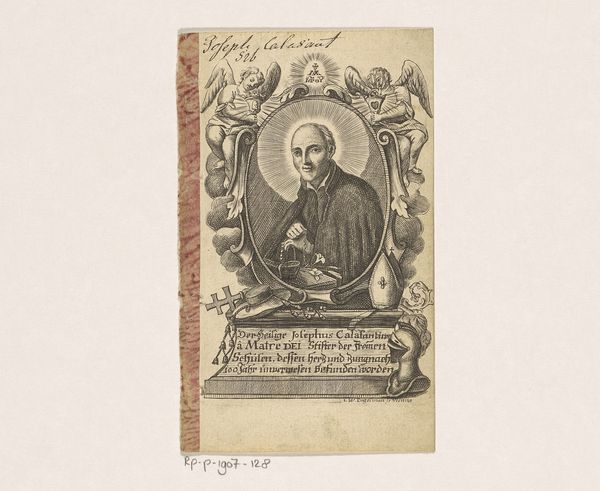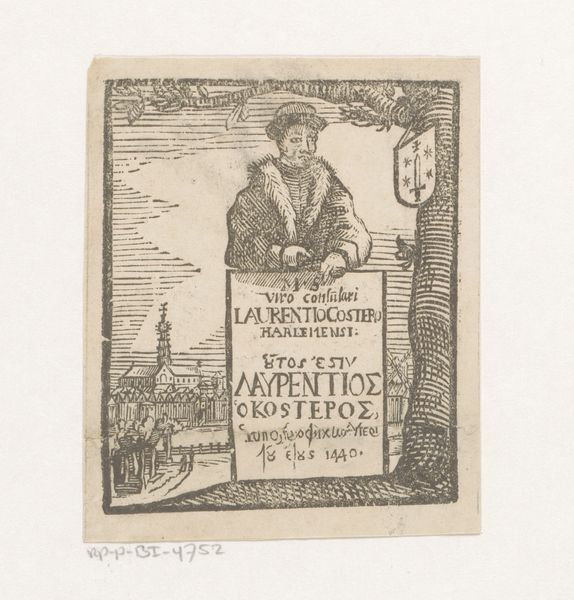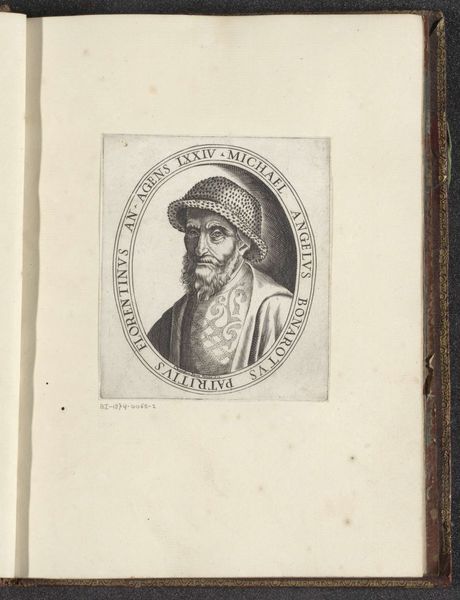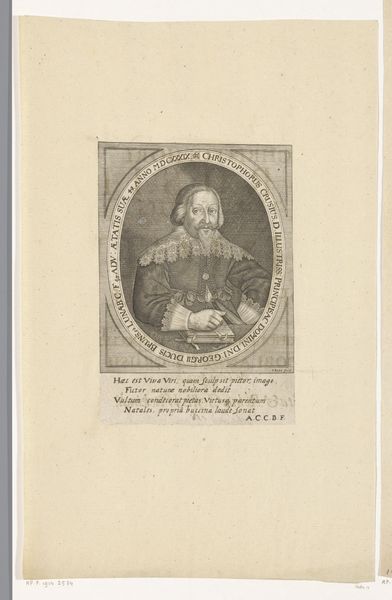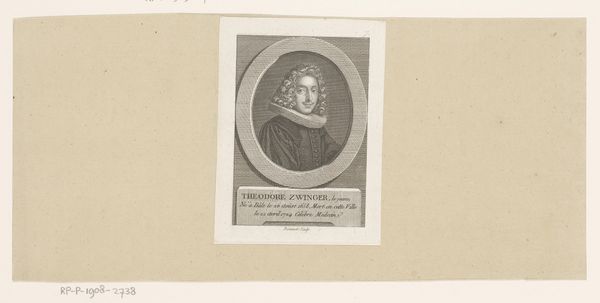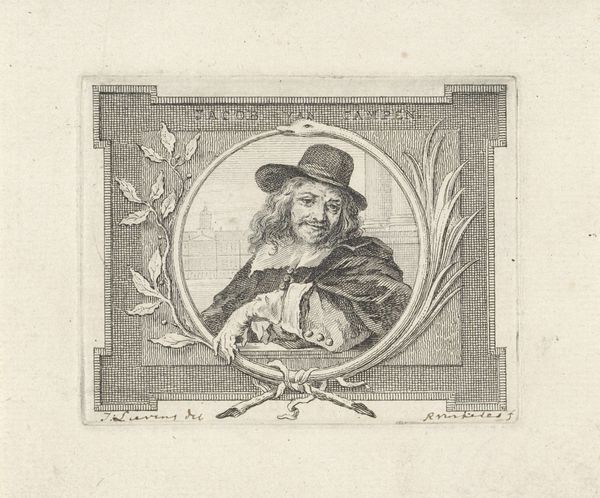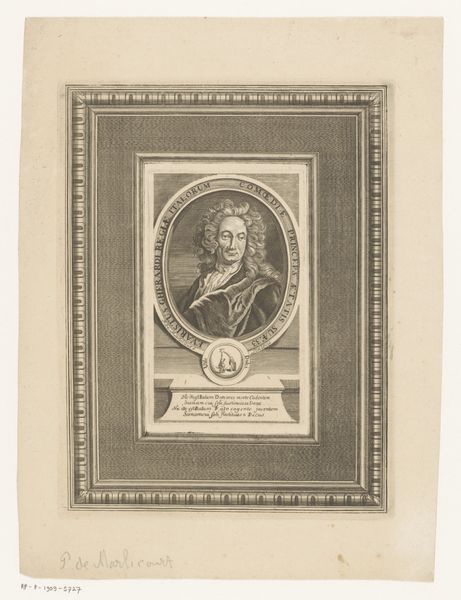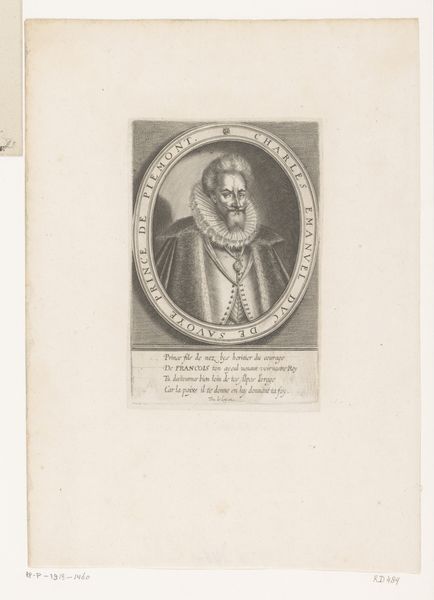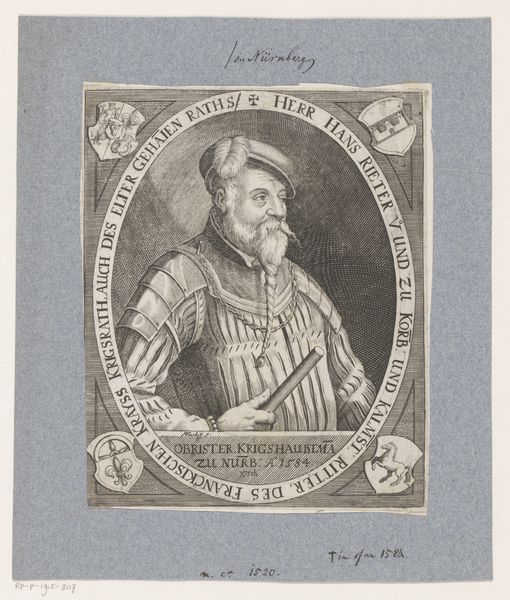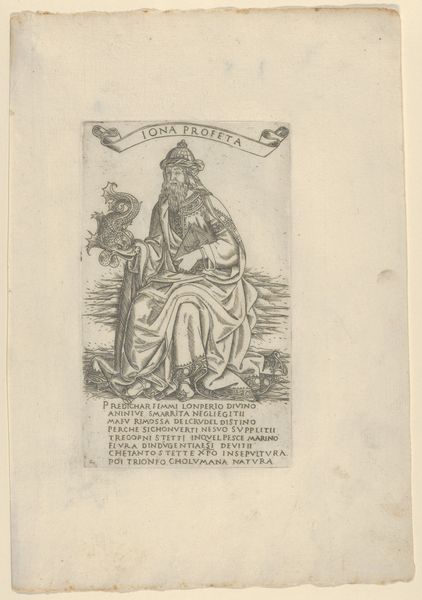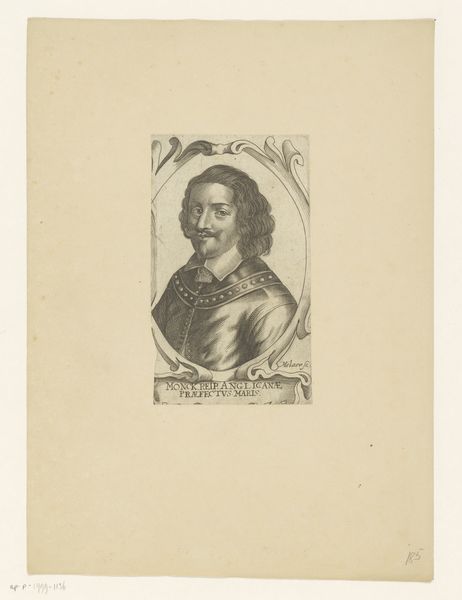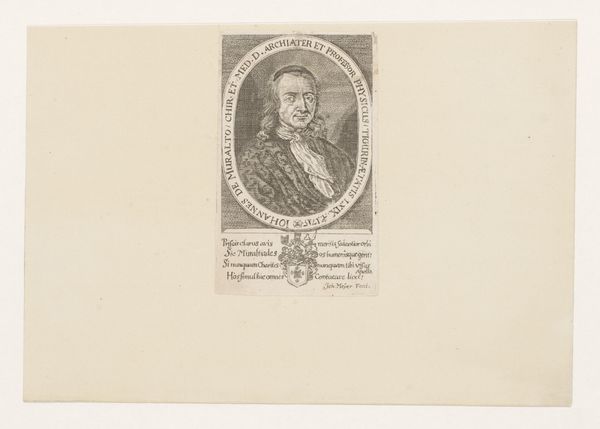
print, engraving
#
portrait
#
baroque
#
dutch-golden-age
# print
#
pencil sketch
#
old engraving style
#
engraving
Dimensions: height 69 mm, width 40 mm
Copyright: Rijks Museum: Open Domain
Curator: Here we have an engraving from sometime between 1653 and 1655, a portrait of Maarten Harpertszoon Tromp. Editor: It's immediately striking how stern he appears, though the style seems almost like a playing card or emblem, doesn’t it? It is an intimate portrayal even in such a graphic style. Curator: It does have the feel of an emblem, you’re right. Considering the period, it speaks volumes about the glorification of naval power during the Dutch Golden Age. Prints like this would have circulated widely, cementing Tromp’s image as a national hero. Editor: Absolutely, the visual shorthand works wonders. Look at the miniature naval battle rendered beneath the portrait, emphasizing Tromp’s strategic genius and bravery. Even those plumes of smoke feel purposeful. Curator: Indeed, those plumes aren't just decorative, they evoke a sense of action and dominance. Think about what an image like this communicated in a society deeply invested in maritime trade and military strength. Tromp becomes a symbol of national pride, a bulwark against rival powers. Editor: He embodies the very spirit of Dutch maritime power. That determined set to his jaw is rather compelling. I’m curious, how did engravings of this nature impact the formation of national identity at the time? Curator: Prints were critical for disseminating information and fostering a sense of shared identity. While paintings of important people or events may only be seen by the rich, these prints circulated among a far larger population. In a sense, Tromp’s image became part of the Dutch cultural DNA. Editor: I see that completely. And in this little image is bundled not only his importance, but also a broader narrative of nationhood and a visualization of Holland's place in the world at this crucial point in history. Curator: Precisely, it serves as a compact expression of Dutch power and aspiration, and that speaks to me far more than any literal portrayal ever could. Editor: I concur; the conciseness elevates the portrait above being a likeness and firmly positions it within the cultural landscape. It’s a symbol loaded with the dreams and values of a very pivotal era.
Comments
No comments
Be the first to comment and join the conversation on the ultimate creative platform.

